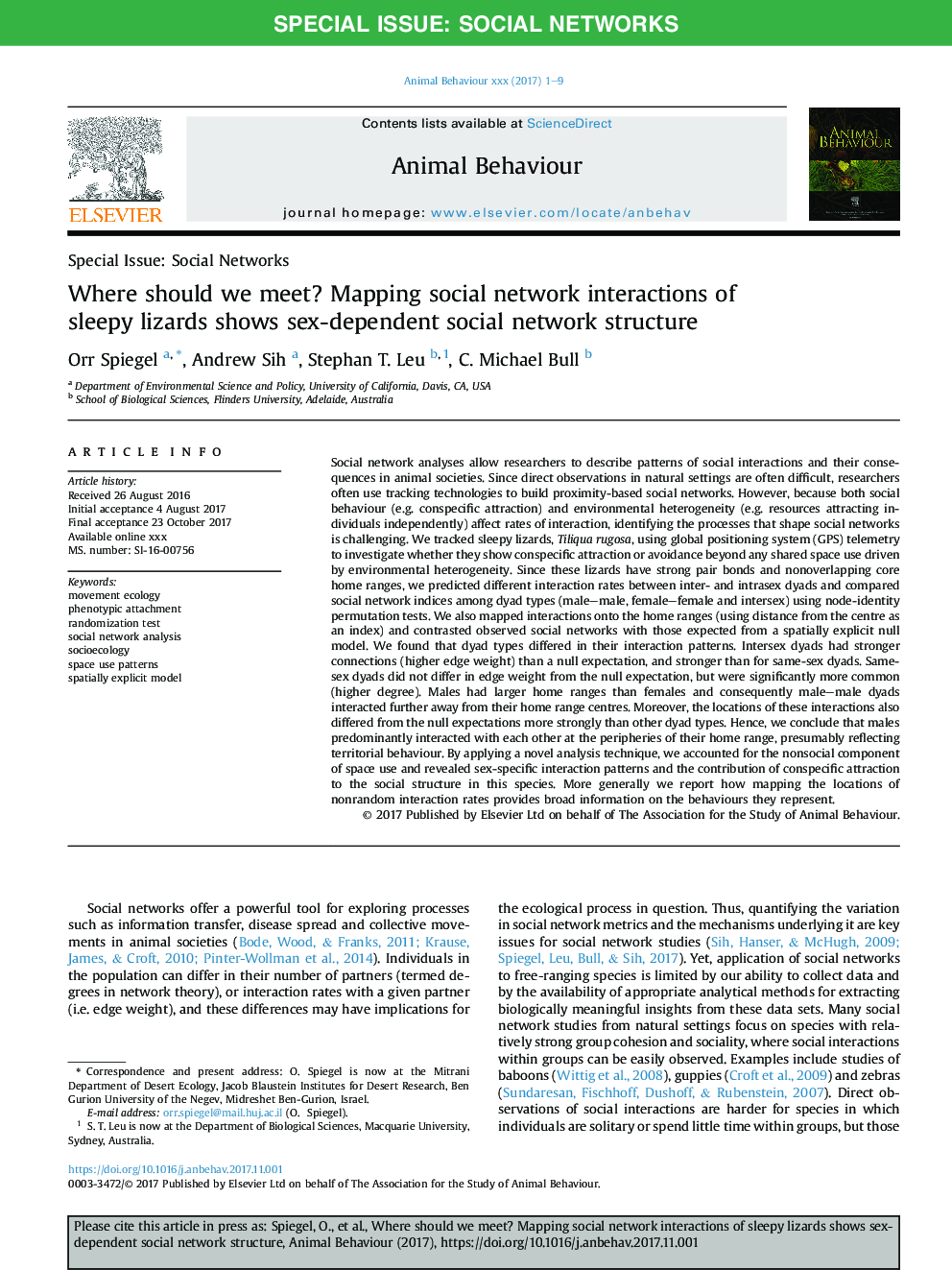| کد مقاله | کد نشریه | سال انتشار | مقاله انگلیسی | نسخه تمام متن |
|---|---|---|---|---|
| 8488698 | 1552192 | 2018 | 9 صفحه PDF | دانلود رایگان |
عنوان انگلیسی مقاله ISI
Where should we meet? Mapping social network interactions of sleepy lizards shows sex-dependent social network structure
ترجمه فارسی عنوان
کجا باید ملاقات کنیم؟ تطبیق شبکه های اجتماعی در شبکه های اجتماعی شب یلدا، ساختار شبکه اجتماعی وابسته به جنسیت را نشان می دهد
دانلود مقاله + سفارش ترجمه
دانلود مقاله ISI انگلیسی
رایگان برای ایرانیان
کلمات کلیدی
محیط زیست حرکتی، دلبستگی فنوتیپی، آزمون تصادفی تجزیه و تحلیل شبکه شبکه، جامعه شناسی، الگوهای استفاده از فضا، مدل صریح فضایی،
موضوعات مرتبط
علوم زیستی و بیوفناوری
علوم کشاورزی و بیولوژیک
علوم دامی و جانورشناسی
چکیده انگلیسی
Social network analyses allow researchers to describe patterns of social interactions and their consequences in animal societies. Since direct observations in natural settings are often difficult, researchers often use tracking technologies to build proximity-based social networks. However, because both social behaviour (e.g. conspecific attraction) and environmental heterogeneity (e.g. resources attracting individuals independently) affect rates of interaction, identifying the processes that shape social networks is challenging. We tracked sleepy lizards, Tiliqua rugosa, using global positioning system (GPS) telemetry to investigate whether they show conspecific attraction or avoidance beyond any shared space use driven by environmental heterogeneity. Since these lizards have strong pair bonds and nonoverlapping core home ranges, we predicted different interaction rates between inter- and intrasex dyads and compared social network indices among dyad types (male-male, female-female and intersex) using node-identity permutation tests. We also mapped interactions onto the home ranges (using distance from the centre as an index) and contrasted observed social networks with those expected from a spatially explicit null model. We found that dyad types differed in their interaction patterns. Intersex dyads had stronger connections (higher edge weight) than a null expectation, and stronger than for same-sex dyads. Same-sex dyads did not differ in edge weight from the null expectation, but were significantly more common (higher degree). Males had larger home ranges than females and consequently male-male dyads interacted further away from their home range centres. Moreover, the locations of these interactions also differed from the null expectations more strongly than other dyad types. Hence, we conclude that males predominantly interacted with each other at the peripheries of their home range, presumably reflecting territorial behaviour. By applying a novel analysis technique, we accounted for the nonsocial component of space use and revealed sex-specific interaction patterns and the contribution of conspecific attraction to the social structure in this species. More generally we report how mapping the locations of nonrandom interaction rates provides broad information on the behaviours they represent.
ناشر
Database: Elsevier - ScienceDirect (ساینس دایرکت)
Journal: Animal Behaviour - Volume 136, February 2018, Pages 207-215
Journal: Animal Behaviour - Volume 136, February 2018, Pages 207-215
نویسندگان
Orr Spiegel, Andrew Sih, Stephan T. Leu, C. Michael Bull,
